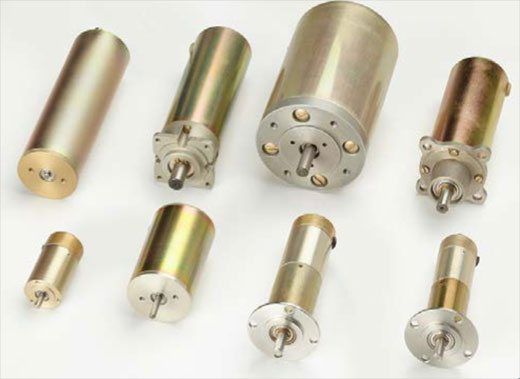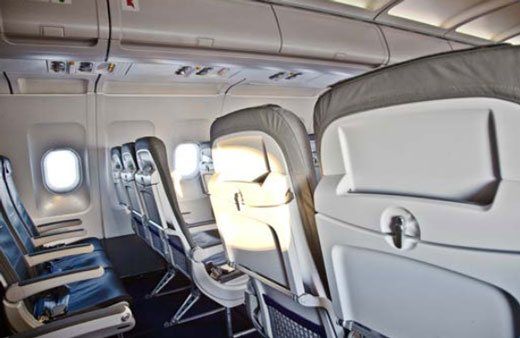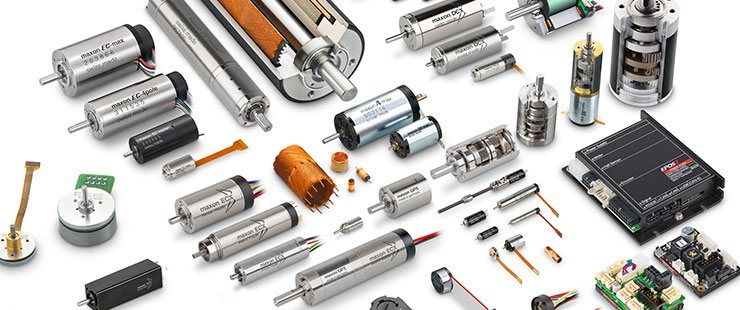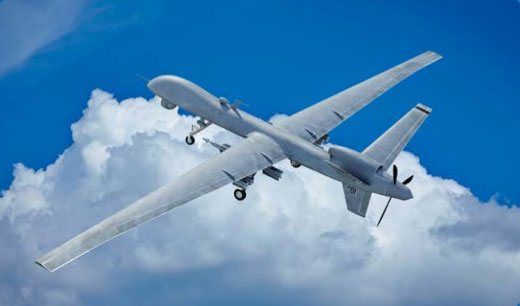Torque, power density and product quality are so vital in these applications where failure is not an option. Lucia said that the wide range of size options and tailor-made product features allow Allied Motion to power a variety of challenging and cutting-edge technologies.
Allied Motion Dayton has the brush and brushless family of DC motors ranging in size from .750 inch to 2.25 inches diameter that are all suitable for use in harsh environments, according to John Burke, sales manager at Allied Motion Dayton.
"Brush motors incorporate alnico magnets which provide consistent performance over a wide temperature range. In addition, high reliability brushless DC motors utilize various magnet materials. Planetary gearboxes are available for use with each motor frame size and deliver high torque output. All motors are manufactured in an AS9100 environment," Burke said.
An Emphasis on Size, Speed, Weight and Power
Weight, size, acceleration and power are the driving forces behind aerospace applications. Here, motor companies need to address complex specifications in order to keep up with industry demands. The smaller, lighter and more powerful components will always have an advantage over their counterparts.

Each motor application has unique challenges but aerospace motors are notably sensitive to motor size and weight (photo courtesy Allied Motion).
Beckstoffer said that aerospace applications require miniature motors with high power density, allowing smaller motors to be used in the application providing an overall reduction in weight. Fuel consumption is also critical to the overall cost of operation, so high power and lightweight motion solutions provide additional cost savings to the OEM. Coreless and slotless motor designs enable high acceleration capability of the motor, allowing guidance systems the ability to track and respond to changing conditions in an instant.
Lucia believes each application has its own unique challenges, but airborne applications in particular are notably sensitive to motor size and weight. Maximum power density per unit mass is a crucial figure of merit in motor selection for these applications, and oversizing a motor can result in spiraling inefficiencies on other axes in the system. Lucia also said it was critically important to have an experienced applications engineer assist with motor sizing.
Burke added that weight has become critical in missile technology and smaller diameter configurations in multiple platform usage. Trends will be to higher power densities and more efficient motors as well as components that will provide higher output than the motors/components that preceded them.
Villiger at Maxon stated that modern passenger planes need to be very fuel efficient to provide a lot of room and convenience. Consequentially, such planes contain hundreds of DC drives. Maxon is able to provide these lightweight, compact and high powered drives throughout the aircraft.
Custom Requirements
Beckstoffer states that customization is essential to providing the optimum motor performance, taking into consideration the various application requirements to create the ideal motion solution.
"Every application will be slightly different in its needs, so the ability to adapt standard products to the electrical and mechanical envelope of the design creates an ideal situation for the designer," he said.
Customization is often crucial to the motor design due to the pressing need to select the optimal product for mission-critical functions and to ensure that strict application-specific requirements are met and quality standards maintained, according to Lucia.
"While off-the-shelf and catalog components can be helpful for refining system requirements and performance parameters early in a development cycle, customized components typically become the most effective means of ensuring later iterations of your project result in a fully functional and hardened final system design," Lucia said.
He also believes that application-specific custom validation test procedures, when identified early and designed thoughtfully with creative consideration for real-world scenarios, can prevent issues down the road.
It's true what they say about aerospace technology: If you're not testing, verifying and validating every step of the way, you're probably in the wrong line of work.
Future Aerospace Demands
These motor manufacturers are well-positioned to handle the current demands of the aerospace and defense industries. Villiger at Maxon noted that the project pipeline is full and the organization is keeping close tabs on areas such as automation, IIoT and support and service for future considerations.

Portescap motors are utilized all over an aircraft including seat actuation, in-cabin televisions and window shades.
Allied's precision brushless motor technology is currently pushing the boundaries of what's possible in motor efficiency and the company will continue to invest in cutting-edge R&D.
"This market will continue to seek incremental improvements in motor performance, and advances in complementary technologies like drives and feedback devices will drive motor design adjustments to help enable those improvements. Customization will remain crucial to meeting application-specific requirements," Lucia said.
Developing and maintaining technical capabilities, higher power density designs and using alternative magnetic and special material solutions will be required to compete in the future, according to Burke. There will be an increased emphasis on autonomous designs and technology with fewer OEMs due to consolidation in the industry. The focus will be on increasing product reliability requirements, power density, and torque output for motors, gearmotors and devices used in new applications.
"In addition, aerospace and defense OEMs will face increasing government and industry regulations they will need to incorporate and flow down to select suppliers. Missiles and guided weapons will require increased accuracy to limit collateral damage," Burke said.
For Beckhoffer at Portescap, the future will be all about exceeding expectations. There will be a significant push for motor efficiency to provide lower operating costs. A cost-savings in one critical area can lead to additional cost-savings down the road.
"Aerospace applications will continue to reduce their overall footprint, going to faster machines with higher capabilitie," Beckhoffer said. "New features will be added into existing platforms as technology moves forward, requiring a motion solution that can keep pace with each and every new advancement."
For more information:
Allied Motion
Phone: (716) 242-7535
www.alliedmotion.com
Allied Motion at Dayton
Phone: (937) 228-3171
www.alliedmotion.com
Maxon Motors
Phone: (508) 677-0520
www.maxonmotorusa.com
Portescap
Phone: (610) 235-5499
www.portescap.com
A Strong Yet Subdued Aerospace Market
According to Deloitte, the global aerospace and defense industry is likely to experience stronger growth than previous years. The company believes industry growth in 2017 will be about 2 percent higher than 2016. They also believe the industry will continue to see positive growth in the next few years, but it will be very slow growth. Here is some data to back these findings:
Stable global gross domestic product (GDP) growth, relatively lower commodity prices including crude oil, and strong passenger travel demand, especially in the Middle East and Asia Pacific regions, will likely drive the commercial aerospace sub-sector growth.
Despite an expected increase of 96 additional large commercial aircraft being produced in 2017, continued pricing pressure and product mix changes by airline operators will likely result in only a marginal increase of 0.3 percent in commercial aerospace sub-sector revenues.
Defense sub-sector revenues are likely to grow at a much faster 3.2 percent in 2017 as defense spending in the United States has returned to growth after multi-year declines in defense budgets, and future growth may be driven by the current administration's increased focus on strengthening the U.S. military.
Rising global tensions have led to increasing demand for defense and military products in the Middle East, Eastern Europe, North Korea, and the East and South China Seas. This is, in turn, resulting in increased defense spending globally, especially in the United Arab Emirates (UAE), Saudi Arabia, South Korea, Japan, India, China and Russia.
(www2.deloitte.com)
Aerospace Megatrends
In a speech in Washington D.C. earlier this year, Dave Melcher, president and CEO of the Aerospace Industries Association (AIA), called attention to four megatrends that would influence the aerospace and defense industry moving forward:
The four megatrends include: the state of deficit politics, U.S. leadership in the global economy, smart regulations and the digital economy.
"The sorry state of deficit politics is the first megatrend that requires much greater attention," said Melcher. "We deeply regret the prolonged budget uncertainty, and unthinking austerity of recent years—especially when it comes to funding real and emerging security needs, and the technological investment that will pay untold dividends in the civil aviation and space arenas."
"Second, we're disturbed by the increasing threats to policies that expand our industry's trade competitiveness that have led to self-inflicted wounds to U.S. leadership in the global economy. We intend to continue assertively making the case for positive engagement in global trade."
"Third, we see a need for smart regulation to reduce the burden imposed by government rules, regulations and executive orders on industry."
"And fourth, the rapid transition to a digital global economy that we're witnessing presents significant opportunities and challenges as more attention is paid to big data analytics and addressing cyber risks," he said.
(www.aia-aerospace.org)









